-
What Brown Fluid Means for Your Transmission
Transmission problems in Bethesda, MD should be taken seriously, as they can quickly lead to many other problems and even shut your car down. If you are having transmission issues, don’t wait to see your mechanic to have them sorted out. Your transmission needs fluid to operate properly, but the fluid also needs to be of a certain quality. Having low or contaminated transmission fluid can also lead to a host of complications, so you should keep up with your fluid changes and keep your vehicle in top shape. Read on to find out what brown fluid means for your transmission.
You need to change your transmission fluid regularly. Clean transmission fluid is a bright red color, so keep that in mind when you look at yours. If your transmission fluid is brown, you might be overdue for a change. Old transmission fluid isn’t as efficient, and it can cause problems with your transmission as a whole. If you have recently changed your transmission fluid but you find that it’s brown, you might have a real transmission problem. In this case you should contact our transmission specialist as soon as you can to get to the bottom of the issue.
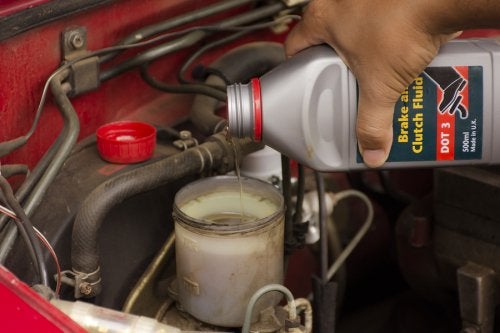
-
Common Causes of Transmission Damage
If you’re having transmission problems in Rockville, MD, you should head to the transmission repair shop as soon as you can. Transmission problems can be extremely serious, and they can set up dangerous situations if you don’t take care of them in a timely fashion. The last thing you want is to deal with a transmission failure while you’re on the road, but there are steps you can take to prevent this from happening. Low transmission fluid, clogged filters, and problems with the clutch can all contribute to transmission damage, so watch out for these issues. Here is a closer look at the common causes of transmission damage.

Lack of Fluid
Transmission fluid keeps your transmission lubricated, which allows it to do its job without issues. However, a leak or similar transmission problem will drain the fluid. A lack of transmission fluid means that the transmission won’t be properly lubricated, which in turn means that too much friction will be created. Remember to keep an eye out for puddles in your driveway, and look at your parking spot when you pull away. If there are puddles of red liquid, you might be leaking transmission fluid. Dirty fluid can also cause transmission problems, so be sure to change your fluid on a regular basis.
Clogged Filter
Did you know that there is a filter for your transmission fluid? Without it, it would be difficult to keep your fluid clean, which would contribute to transmission problems. When the filter is clogged, not enough fluid will be able to pass through it. Your transmission might overheat or completely shut down, both of which can be extremely problematic. In addition to having to pull off of the road, you’ll have to seek transmission repair to get your vehicle running again.
Clutch Problems
When you have a manual transmission, you need to understand your clutch. If your clutch is jammed, your vehicle might shake and you may have difficulty switching between gears. Go to a professional immediately if you have this kind of transmission problem, and look out for strange smells and sounds.
-
Tips for Making Your Vehicle Last
It’s tough to keep your vehicle running when you have transmission problems in Silver Spring, MD, but there are ways you can keep your car in shape. Taking proper care of your vehicle and visiting the transmission repair shop can help you get all that you can out of your investment. Look at this video for some tips for making your vehicle last.
Every vehicle needs maintenance, and the right amount of upkeep can extend your car or truck’s working life. Make sure you change your transmission fluid and your coolant every two years, or after 24,000 miles. Check your power steering system for potential leaks, keep an eye on your brake fluid, and change your differential oil every 30,000 or 60,000 miles. Your engine oil needs to be changed much more frequently, so switch it out every three months or every 3,000 miles.
-
These Signs Mean Your Transmission Needs Repairs
A working transmission is vital for any vehicle. While you can expect your transmission to remain in good shape for thousands of miles down the road, there may come a time when you need to bring your car in to the transmission shop for service. By paying attention to the signs of transmission problems, you will know when you need to visit your transmission specialist in Silver Spring for a transmission tune up. Let’s review three sure signs that your transmission needs attention from a qualified mechanic.
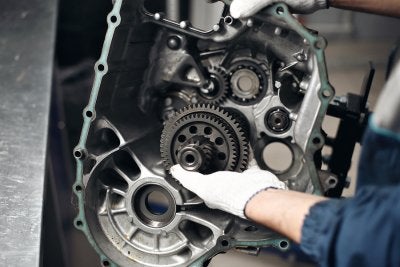
Random Gear Changes
When an automatic transmission is functioning properly, it will move smoothly through its entire range of gears. A sign of transmission problems is when your transmission seems to randomly slip in and out of gear, especially when you are travelling at a steady speed. Your transmission repair professional will be able to adjust your transmission’s gears and fix any other repair problems that may be causing it to shift.
Thudding Sensations
If your transmission needs significant repairs, it may start to make a thudding sound as it shifts between gears. This sound is the result of your vehicle’s gears failing to engage smoothly or responsively. While these thudding sensations can be irritating, they may also be a sign of a significant repair problem in your vehicle. After you have had your vehicle serviced by a qualified transmission mechanic, your car should drive smoothly and soundlessly.
Failure to Engage
A properly functioning transmission will shift into gear right away after you move your stick shift from the park to the drive position. One sure indicator that your transmission is in need of repairs is when it fails to engage after you have shifted your vehicle out of park. If it takes a few seconds for your transmission to shift into gear, you may have a mechanical or electrical problem on your hands. With computer diagnostic technology, your transmission repair technician can easily identify what is going wrong with your transmission.
-
Driving Habits That Can Destroy Your Transmission
When you first learn to drive, you will be taught driving habits that will help to keep transmission problems at bay. Over the course of many years of driving, however, it can become tempting to take shortcuts behind the wheel. When you bring your car in for transmission repair in Bethesda, your transmission specialist in Bethesda, MD can answer your questions about which driving techniques may be harming your transmission. To help you prevent transmission issues, read on to look at some driving habits that can destroy your transmission.
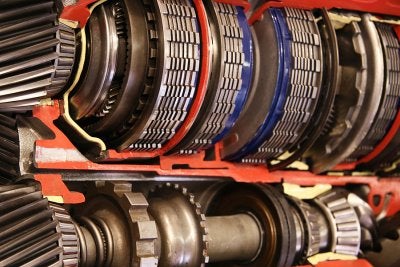
Neglecting the Parking Brake
While drivers of manual transmissions nearly always use their parking breaks, many drivers with automatic cars often neglect this essential device. When you engage your parking brake after parking your car, you will help to take pressure off of your vehicle’s output shaft. In the event that your car shifts slightly while it is parked, the parking brake will help to prevent the transmission from becoming seriously damaged.
Shifting Before Your Car Has Stopped
Your automatic transmission needs to come to a full stop before you move the shift selector from one of the drive functions into park. If you switch between reverse, park, and drive too quickly, you run the risk of grinding your gears and causing serious damage to your car’s transmission. To protect your transmission from harm, get in the habit of slowing down your shifts and waiting for your car to come to a complete stop, before you select a new drive mode.
Using Downshifting to Slow Your Vehicle
If you grew up driving manual transmission vehicles, you may have learned about the technique of downshifting to slow down on a hill. While downshifting can be a helpful technique when you drive a manual transmission vehicle, this practice might cause devastating damage to your automatic transmission. Rather than forcing your automatic transmission into a slower gear to reduce your speed of travel, you can safely slow down by gently tapping on the brakes.
-
Stopping Easily with a Manual Transmission
When you drive a car that contains a manual transmission , you will have complete control over your vehicle’s shifting in gears. This video from Vehicle Virginia explains how to easily stop your manual car. To stop easily, you can either downshift match your revolutions or coast in neutral. If you are experiencing transmission problems in Rockville, your transmission mechanic can restore your manual transmission to peak condition.
In order to make sure that your transmission problems are fixed correctly, always bring your car to a shop that specializes in auto transmission repair. By bringing your car to a team of expert mechanics, you will have the peace of mind that comes from knowing that your transmission is ready for all of your driving adventures.
-
The Role of Your Car’s Transmission
The transmission is among the most critical components of any vehicle. Whether you drive a car that contains a manual or automatic transmission, your transmission is designed to transfer power from the engine to the wheels. By matching the output of the engine to changing driving conditions, the transmission also prevents your vehicle from stalling out on the road. Using CV joints, a transmission is able to send the power that is created by the generator directly to the drive wheels of the car. A transmission shop in Silver Spring can help to keep your transmission up and running for many miles down the road.
When you start to notice that your car has a slipping transmission, it may be time to visit your transmission specialist. Using specific tools and equipment, your team of transmission service experts will be able to fully repair the sophisticated components that are located within your car’s transmission system.

-
Should You Repair or Replace Your Transmission?
A broken transmission can leave you with a major decision on your hands. In order to fix your transmission problems, you may have to choose between repairing the damage and scheduling a full transmission replacement. By consulting with a transmission specialist in Silver Spring, you will receive essential information that can help you make the smartest choice for your transmission repairs. While some transmission problems can be fixed, others may require a full replacement of your system.
There are a few factors to keep in mind when you are choosing between transmission repair and replacement. If your transmission is only suffering from a minor malfunction, a repair may be all that you need to get your car back up and running again. Major transmission problems, such as cracked pans or broken gears, may require a full transmission replacement. Before you decide between repairing or replacing your transmission, it is a terrific idea to get a cost estimate from your technician.
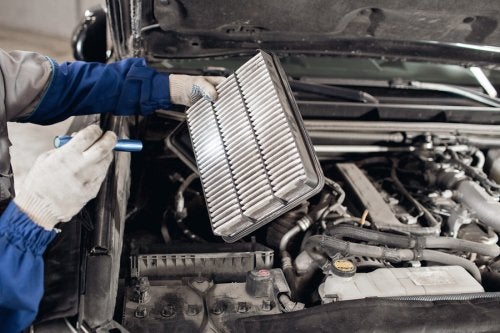
-
Mistakes to Avoid if You Want to Extend the Life of Your Transmission
Transmission problems can dramatically affect the drivability of your vehicle. When your car starts to experience severe transmission problems , it may start to slip out of gear or produce strange sound and aromas while you drive. With help from a transmission specialist near Bethesda, you can prevent the need for a transmission replacement for as long as possible. Your transmission mechanic can fix problems as they occur, and can also provide you with preventative maintenance services for your transmission. Read on for a look at some mistakes that you should avoid if you want to extend the life of your transmission.
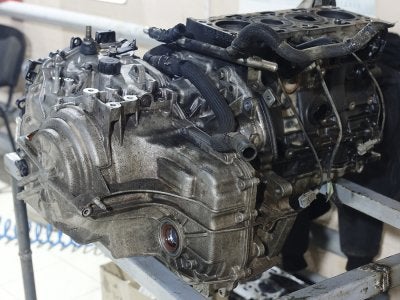
Neglecting to Check Your Transmission Fluid
A common transmission maintenance mistake for many drivers is to neglect regular transmission fluid inspections. Transmission fluid, much like motor oil, is important for cooling, lubricating, and cleaning the various components that are located within your car’s transmission. Every month, you can use the transmission dipstick to make sure that your transmission fluid is at the proper level, and is not getting too dirty.
Forgetting Transmission Maintenance Appointments
Your transmission needs the same level of care and maintenance as the other components in your vehicle. In order to ensure that your transmission has the longest lifespan possible, you will need to have it serviced around every 30,000 miles. During your 30,000-mile service appointment, your mechanic will replace your transmission fluid and filter, inspect your vehicle’s transmission components, and check to make sure that your computer is not sending out any transmission trouble codes.
Driving Under Strenuous Conditions
If you want to go above and beyond to make sure that your transmission has the longest possible life, it is important to evaluate your typical driving conditions. Driving over very hilly terrain, hauling heavy loads, or sitting in stop and go traffic can all cause your transmission to wear out prematurely. By changing your driving habits, you may be able to help your transmission to last for even more miles down the road.
-
What Car Owners Should Know About Transmission Solenoids
When your vehicle starts to experience transmission problems, your solenoids could be to blame. Transmission solenoids are the part of your transmission that manages the changing of gears. These computerized components can cause serious transmission problems if they are not properly maintained. A transmission specialist that offers car transmission repair in Bethesda will be able to test out the functionality of your solenoids and determine whether they need to be rebuilt. Here is an overview of what all car owners need to know about their solenoids.
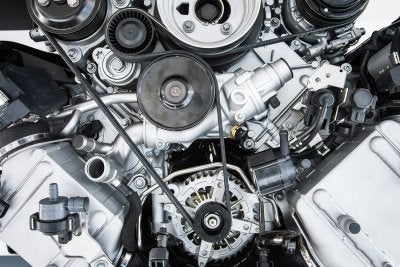
How Solenoids Work
While you drive, the computer in your car’s engine is continually monitoring your vehicle’s speed and power. When the computer senses that the car needs to shift up or down in gear, it will send a message to the solenoid. After the solenoid gets the computerized signal, it will deliver hydraulic fluid to the transmission gear set. Depending on the amount of fluid and the level of pressure in the hydraulic line, the transmission will either shift up or down.
Signs of Solenoid Problems
There are a few common signs that could indicate that your solenoids are having problems. When your car starts to shift erratically, your solenoids could be having trouble delivering the correct amount of hydraulic fluid. A transmission that is unable to downshift may also be suffering from broken solenoids. In order to determine whether your solenoid problem is electronic or mechanical, your auto technician will need to connect your transmission to a computerized diagnostic system.
Protecting Your Solenoids from Damage
A minor amount of wear and tear is normal for any set of solenoids. However, your solenoids should last for tens if not hundreds of thousands of miles before they need to be replaced. In order to protect your solenoids from damage and wear, you will want to change your transmission fluid at regular intervals. Fresh transmission fluid will flush dirt and debris out of the solenoids, which will help them to remain in proper operating condition for longer.
